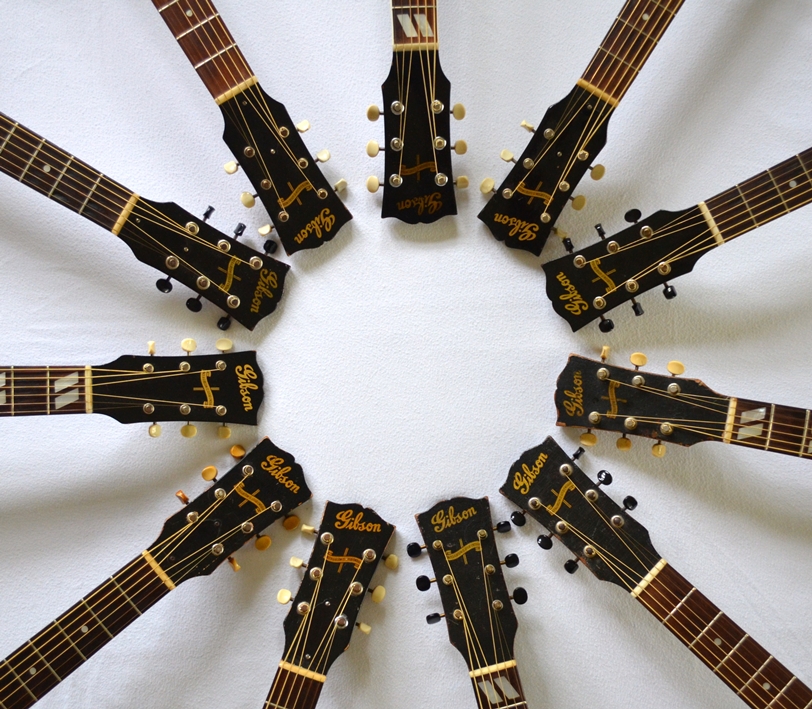“I could learn to play this guitar,” muses Lauren Sheehan while cradling a rare, 1943, rosewood Gibson Southerner Jumbo.
We are nearing the end of a marathon fourth and last day of the Great Kalamazoo Gals Sessions. Lauren had asked me, “Is there one more sound that you want on the CD?” Watching an artist bond with an instrument is a beautiful thing. Lauren tuned up, began working through a few simple arpeggios, and then looked up at me and uttered that understated endorsement of the guitar. It was love at first, or at minimum, fourth of fifth pluck.
We are using the rosewood SJ on our one post-war song. I’d originally voiced the opinion that all of our songs ought to have existed when the guitars existed. But, I changed my opinion when, during the evening before our first session when Lauren, co-producer and engineer Eric Tate, and I dined together to talk about the project, Lauren played a haunting arrangement of Gillian Welch’s “Hard Times.” “We need to end the CD with that song,” I blurted out. The song sounds old, references Stephen Foster, whose “Old Folks at Home” Lauren had already performed, and could stand as a symbol of future for women’s voices in American music. Plus, Lauren’s arrangement and performance had slayed me.
When we began preparations for the song, I suggested two options to Lauren: the driest guitar present, a 1944 J-45 with maple back and sides, or the wettest, reverb-iest guitar in the studio, the liquid-sounding rosewood SJ. Lauren spent about fifteen minutes with the maple J-45 before she reached for the SJ. A couple of notes proved that artist and instrument had reached an understanding.
It has been yet another extraordinary day. Each morning, I’ve awakened early, prepared guitars, and headed to the studio for another mesmerizing, educational session. This morning, I awoke even earlier than usual (4 am instead of 5 am) to do some setups on the couple of guitars we’d not yet used. I made new, compensated bone saddles for the couple of guitars that had challenged us to tune them, and lowered a few nut slots. I wanted to be sure that playability did not enter into our final guitar choices.
In addition to Lauren schooling me on in-studio performance and Eric showing me what a producer ought to do, and, more importantly, think, today I get a lesson in family harmony. Literally. Lauren’s daughter, Zoe, has taken the train from New York City to lay down a bit of harmony on a couple of tracks. First up, is a Carter family medley and Lauren and Zoe demonstrated why folks who share a gene pool can harmonize in a way that the unrelated cannot rival.
It’s been a long, challenging, and incredibly rewarding four days (with one well-deserved day off). I’ve come to realize how fortunate I am that Lauren, Eric, and the guitar lenders have committed to my vision. Indeed, my only contribution (well, other than serving as guitar tech and roadie) is that this whole, crazy project was my idea.
Today, I get an additional reason to cherish the moment and reflect on how humbling this project had been. NPR is here to interview Lauren, Eric, and me. I’m happy to know that our mission of bringing voices to these guitars and the Kalamazoo Gals who made them is going to resonate beyond the four walls of the studio.
Here’s a link to my interview.
Tomorrow, I’ll begin boxing the Banners and sending them back to their homes. Sniff, sniff. I’ll also bask in the firm belief that what we did here was not only historic. It was good enough.
